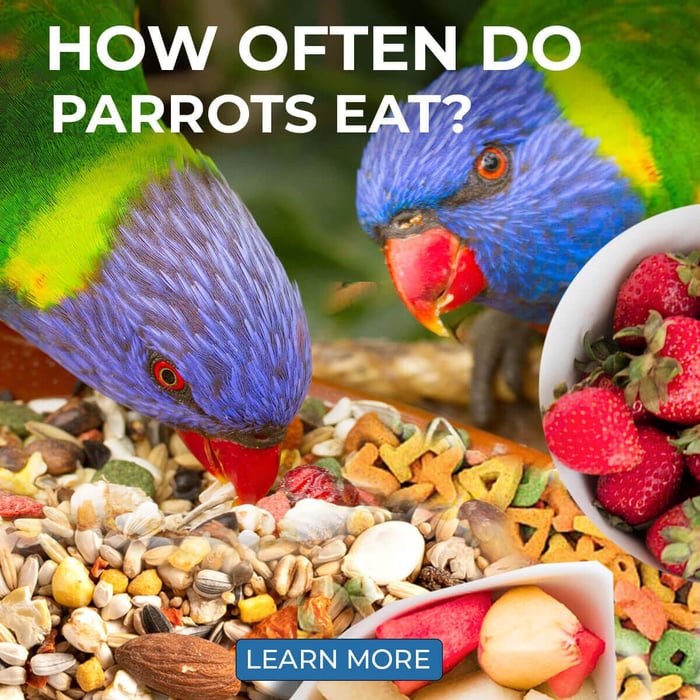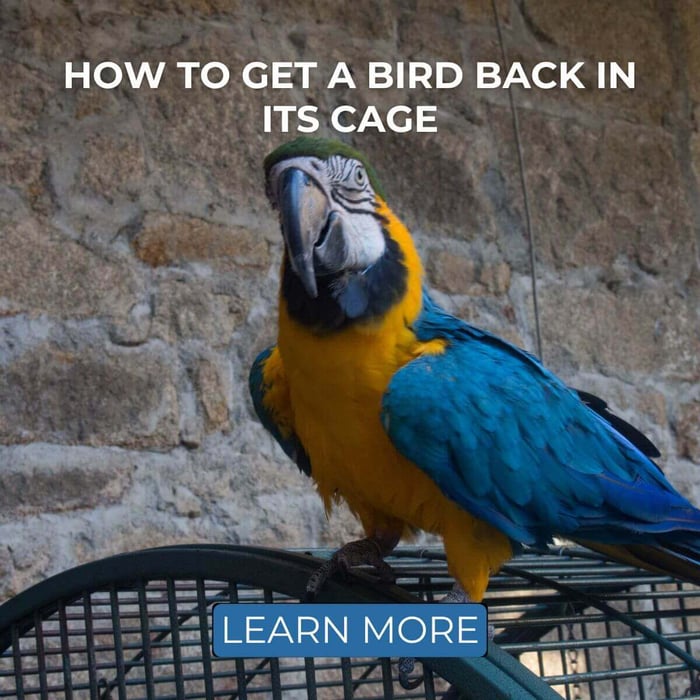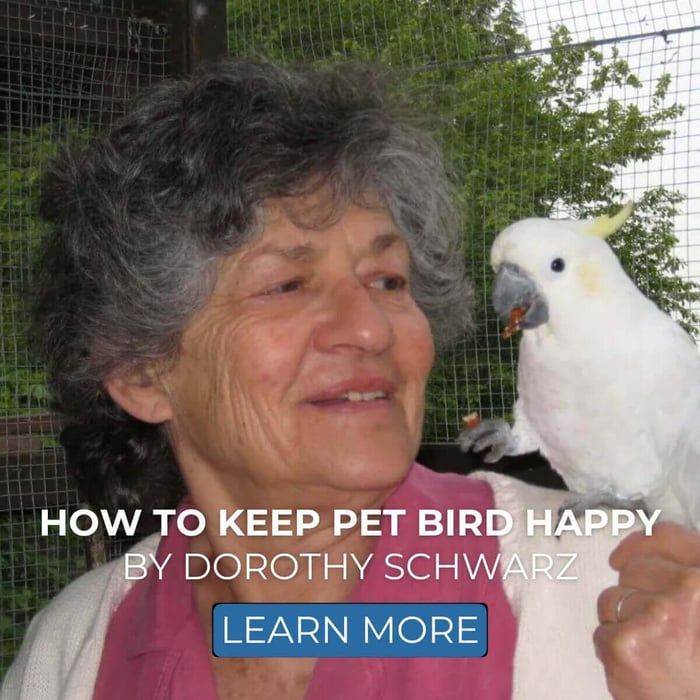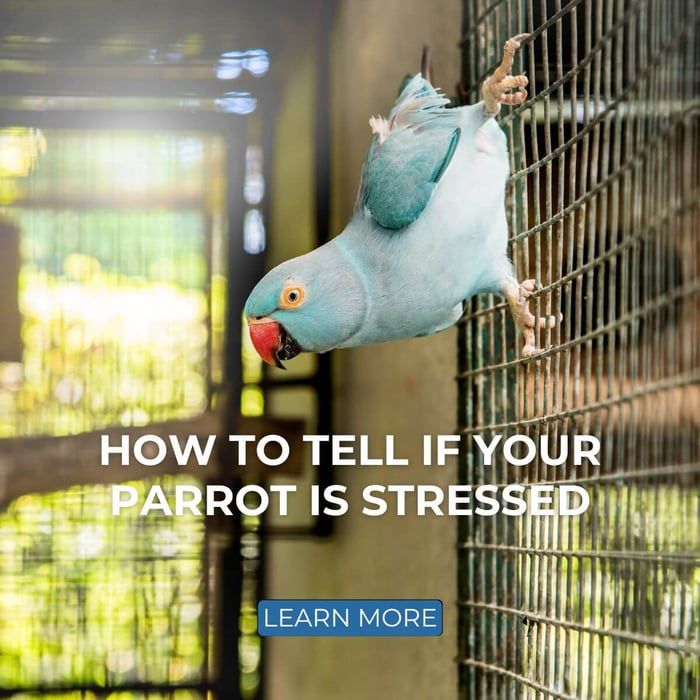Why Do Parrots Like To Bathe?
Why do parrots like to bathe? What’s the function of it, and should you keep a bird bath in your parrot’s cage?
Most of us know that birds, in general, bathe from time to time. New parrot owners, though, are sometimes left amazed at how much their feathered friend loves to take a bath! Let’s talk about parrot bathing.
The Function Of Parrot Bathing
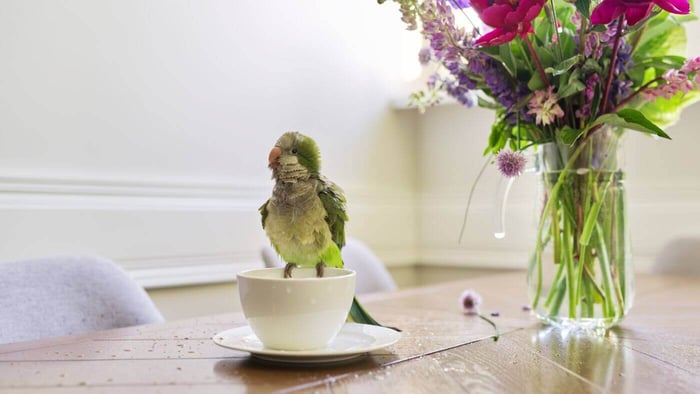
In the wild, birds typically engage in two types of bathing: water baths and dust baths. While different species may have their preferences, both types serve important functions that answer the question, why do parrots like to bathe?
Water baths help remove and soften any built-up dirt. They’re often followed by a preening session, during which a bird carefully further cleans its feathers and applies water-resistant oil from a special oil gland on their feathers.
Although birds mainly bathe for cleanliness, it also has other functions. A refreshing bath can help cool the body down during summer, and it seems that a lot of parrots also just find bathing plain fun. For pet parrots, it’s, therefore, a great form of enrichment that shouldn’t be overlooked.
How Often Should I Bathe My Parrot?
Many pet parrots will appreciate being given the opportunity to bathe in some way or another. There are no set rules when it comes to bathing parrots, although letting your bird splash around too often (i.e., daily) can lead to dry skin.
To start, you could try offering your parrot some water to bathe in once a week. During the height of summer, daily misting can be a good option to help keep your bird cool.
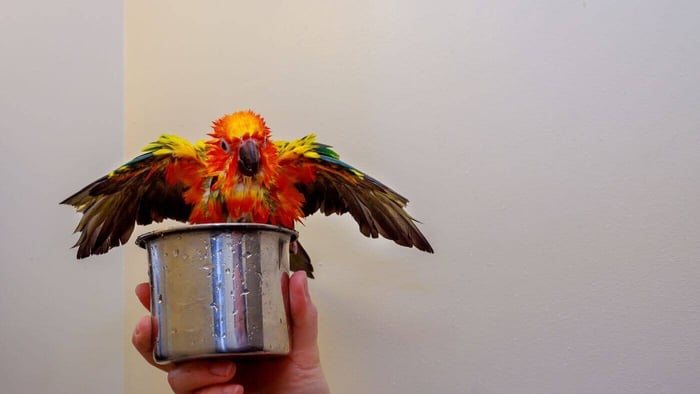
How Does Parrot Bathing Work?
If you’ve never owned parrots or other birds before, you might at this point be wondering how in the world one actually bathes a bird.
Luckily, many parrots know perfectly well how to take a bath, so all you have to do is present them with some water. In fact, it’s not unusual to find your bird has tried to squeeze itself into its water bowl for some splashy fun!
Here are some ways you can bathe your parrot. Most birds have preferences, so it’s a good idea to try it all.
- Shallow Bowls or Deep Plates: Provide a shallow bowl or deep plate filled with water. Be prepared for splashes, as birds often love to create a watery mess!
- Cage Baths: Consider using a dedicated parrot bath that can be placed inside or outside the cage. Some of these baths are partially covered to help contain the water.
- Kitchen Sink: Take your parrot to the kitchen sink and let a gentle stream of lukewarm water run. Use a plate or shallow container at the bottom to catch the splashes.
- Shower Time: For the ultimate experience, you can take your parrot into the shower with you. Just ensure the water is lukewarm and not too forceful.
- Misting: Use a parrot mister to lightly spray your bird. Many parrots enjoy this method, and it can be a great way to provide moisture.
- Leafy Greens: Hanging wet leafy greens in the cage can encourage some birds to rub against them, mimicking the sensation of bathing.
Don’t forget: A wet parrot is at risk of getting too cold. Don’t bathe your parrot if your home is chilly, and don’t use icy cold water. If your bird allows it, you can gently help dry it with a clean (paper) towel.
Why Doesn’t My Parrot Like to Bathe?
Don’t worry too much. Your parrot should be able to keep itself clean enough. Just keep offering water, splashing your own hands in it to show how much fun bathing is, and rewarding the bird for showing interest.
Some parrot enthusiasts have had success with pet drinking fountains due to the attractive running water, placing leafy greens in the bathing dish, or even putting a mirror on the bottom to make it seem other birds are enjoying the water as well. Some parrots exclusively like to be misted with a sprayer, loathing any other type of bathtime. Just try some different things!
In any case, whatever you do, don’t try to force your parrot to bathe unless it’s an emergency. And remember, if it’s sat with its wings folded up and its eyes closed, it’s not enjoying itself. You should stop to prevent excessive stress. You’ll know it’s feeling comfortable when its wings are opened, and it’s actively splashing around.
Tip: If your bird has gotten into something and it really needs to be cleaned, you can use a washcloth moistened in lukewarm water. This won’t be appreciated, and you may have to deal with a grumpy parrot for a while afterwards; be sure to give it a treat.
An Alternative for Cleaning
In the event your parrot gets into something particularly messy, you can use a damp washcloth with lukewarm water to wipe down its feathers. This method is usually not well-received, so be prepared for some disgruntled squawking. Always follow up with a treat to ease the grumpiness!
The Joy of Bathing

Observing your parrot during bath time can be one of the most entertaining aspects of parrot ownership. Many parrots will splash around, flap their wings, and generally enjoy themselves in the water. Afterwards, they often spend significant time preening their feathers, which is a delightful sight to behold.
Conclusion
Regularly offering your parrot a bath is not only a fun and enriching experience but also beneficial for their health. Watching your parrot enjoy itself in the water can bring laughter and joy to your home, and the subsequent preening sessions showcase their instinctual behaviours. So go ahead—experiment with different bathing methods and create a joyful routine for your feathered friend. Your parrot will thank you with vibrant feathers and plenty of happy chirps!

